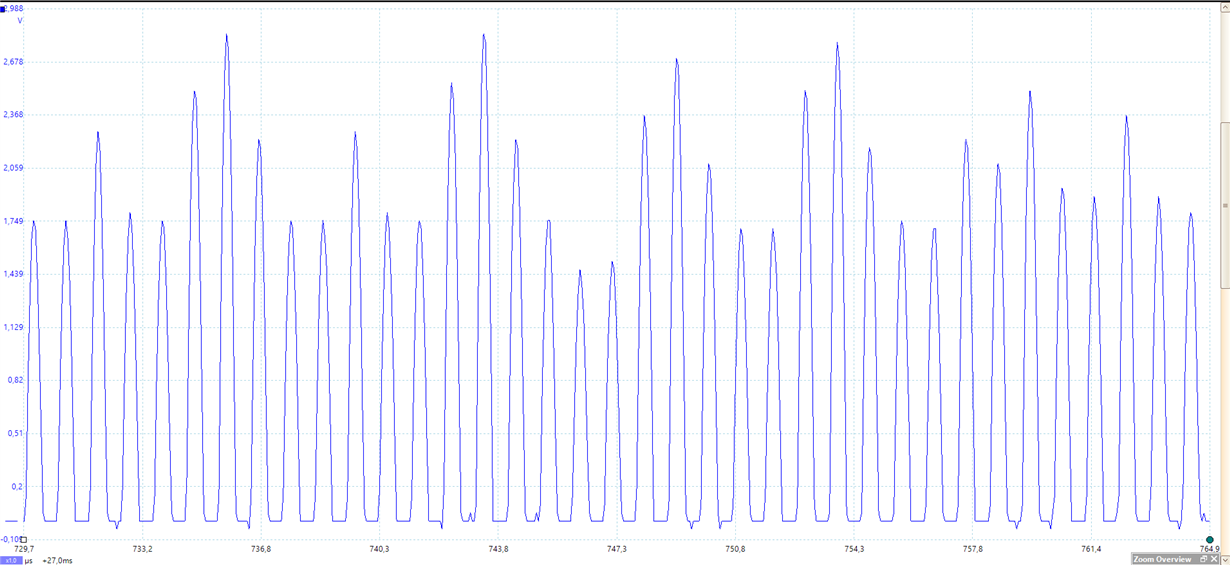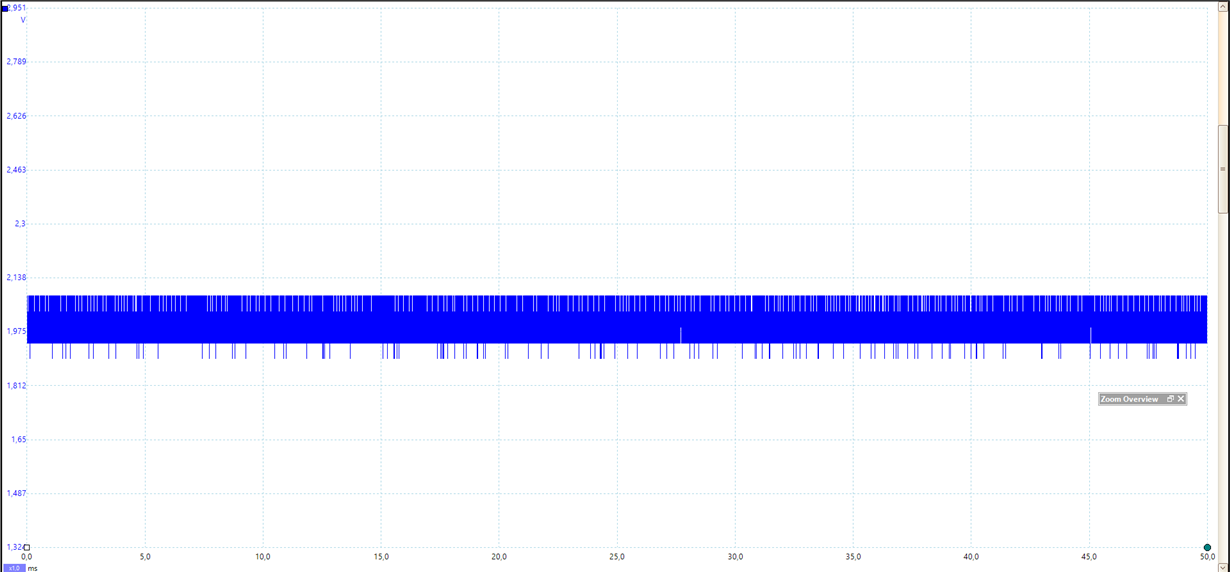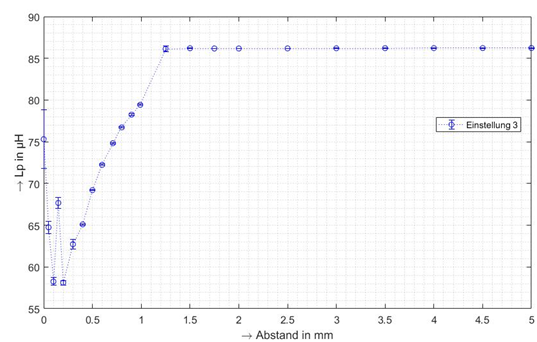Part Number: LDC1000
Hello guys,
I measured a wrong behavior of the proximity Code from the LDC1000. II used the LDC1000EVM with a ferrit coil with 80µH.
The Limit of the rp measurement is 32768 codes, but in some Distances I measured higher codes and the signal is very noisy.
This image shows the problem.
Can someone tell me why or how this faulty behavior comes about?
best wishes
André





